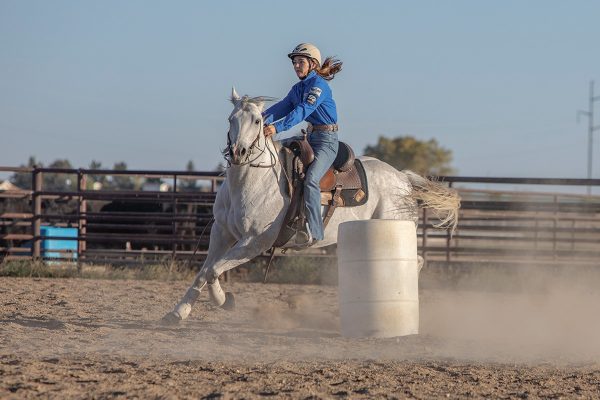
You know the barrel racing pattern, and you’ve started taking your horses to gymkhanas and play days. Now it’s time to refine your approach and make sure you have the best possible control of your body position and your horse so that you can improve your form and quicken your times.
Here, trainer and top barrel racer Kelly Kennedy Joseph coaches you through a few barrel racing drills while explaining how your body affects your horse’s position and reactions. Kelly has been active in barrel racing since she qualified for Little Britches Rodeos. She now coaches riders from her Berthoud, Colo., facility and races at the professional level nationwide.
Perfectly Positioned
“Don’t make this a rein-only sport,” Kelly says. “Make sure you’re using your core and your whole body. Control around the barrels doesn’t come from a bigger bit. You’re not running barrels with your hands. You should be running barrels with your body connected and with the horse’s body.”
With her barrel racing drills, you’ll go slow and learn to position your horse and your body around the turn. Going slow at the start means you’ll have the basics in place to go as fast as you can later.
You don’t want your horse to go straight by the barrel and then pivot at the last moment. If you get to a barrel and only turn your horse’s nose abruptly to turn him, his hip and body will swing away from the barrel and you won’t get a good turn.
Instead, you’ll teach your horse how to position himself in an arc so that he can use his body well all the way around a barrel. Your horse will learn that after he runs in, he needs to rate his speed before turning. He must get into position so he can keep himself and you safe around the turn.
Back it Up
To help your horse learn how to position himself around the barrel, you’ll stop and back him before getting to the barrel. Approach a barrel that you’ll circle to the left. Walk toward it but stop 10 feet in front of it (later you may adjust this distance based on your horse’s size and growing ability to rate his own speed).
Once you’ve stopped, ask your horse to back up by lifting your reins up and back, while urging his hip to the left (toward the barrel). As you back up, imagine rolling your hips down into the saddle as if you have rocks in your pockets and feel them weighing you down. Move your right leg back to push the horse’s hip into an arc while you also continue to back.
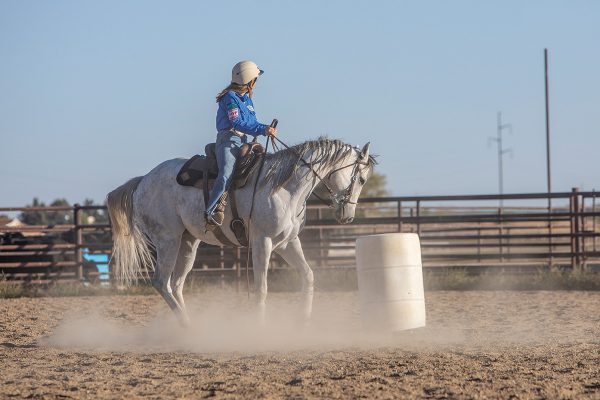
Walk it Out
Next, cue your horse to walk by guiding your hands forward in front of the saddle horn. Keep your right (outside) leg back to keep the arc you created while backing. Make sure to keep your shoulders square as you ride around the barrel.
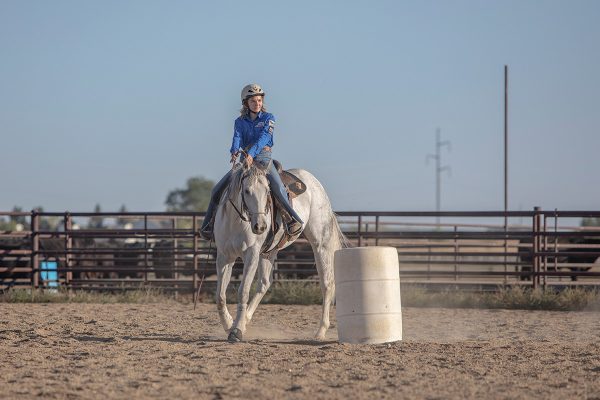
Keeping your shoulders up and squared will help your horse lift his body and avoid losing his balance as he turns. Repeat the backing and arcing exercise on different barrels, and mix up riding a lap around the arena before working a barrel again.
Pick Up the Pace
When you feel that your horse is listening to your cues and is willing to easily move his hip around the barrel, try approaching the barrels at a trot, and then a lope. You can still stop and back your horse at first.
Later, you’ll find that you don’t have to stop completely. Simply slow your horse while initiating the hips-toward-the-barrel leg cues. You want to get your horse listening to your leg cues as you initiate the arc while moving forward at a walk, then trot—and finally, at the lope.
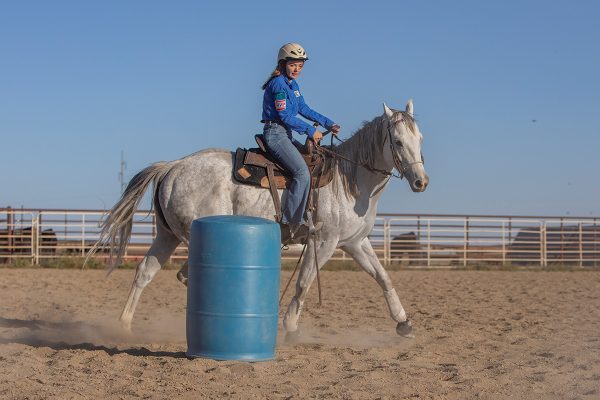
Mix up your training by working on different barrels or repeating the exercise around one barrel, or even a single cone or a bush out in the pasture. Get your horse listening to your position instead of over-focusing on the barrel and the whole pattern. You may also put out four barrels and pick and choose which barrel you’ll circle.
When you concentrate on the stop and back exercise and your position, you’ll get your horse listening instead of anticipating how to do the same barrel pattern that you’ll do in a race.
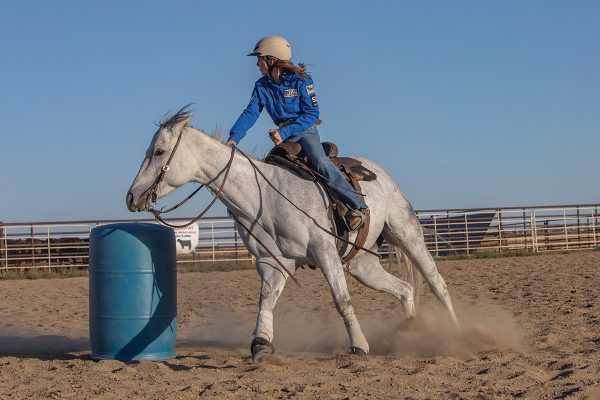
Special thanks to Rose Applegate and Sixes Royal Chic for modeling the barrel drills. Helmet courtesy of Troxel.
This article about barrel racing drills appeared in the May/June 2022 issue of Young Rider magazine. Click here to subscribe!


